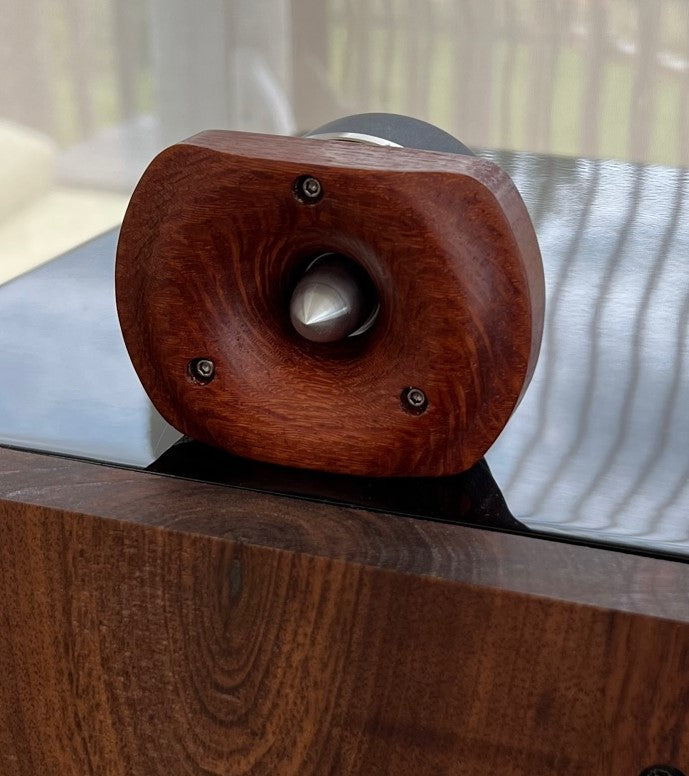
Please check out my other blog posts here.
In this blog post I test a newly designed horn lens for the Fostex T96A bullet style super tweeter. I featured a full review video of this tweeter about a year ago.
Frustratingly, the T96A is discontinued by Fostex after a short lived life. However Fostex makes a number of other similar tweeters. Please contact me for a quote on a horn lens for an available tweeter such as the T900A or T90A.
In the past I've designed and built horn lenses for various Fostex super tweeters which mount over top the existing horn lens. The latest design replaces the existing horn lens so that I can control the horn flare geometry and optimize it perfectly using my ES horn flare curvature.
Below is a section view of the stock tweeter. As you can see, the horn flare curvature has an abrupt transition at the horn mouth followed by a shallow chamfer. I'm not sure what the rationale was for this shallow chamfer feature.

Below is the section view of my horn flare geometry which transitions the horn mouth with smoother geometry. I've used the ES horn flare geometry which has an exponential flare rate compared to the stock curvature which appears almost conical.

I went with the oval shape to distribute potential edge diffraction modes compared to the a circular body. Also, the tweeter no longer requires the dowel support stand, reducing the center to center distance with the other drivers. The new lens design also lends itself to flush baffle mounting.

I decided to use some very hard and dense lacewood for the project. The lens is fully machined in one setup including the three mounting holes to maintain perfect physical accuracy to the rest of the tweeter.



Measurements

I decided to directly compare the new horn lens against the stock tweeter. I began by measuring the on and off-axis frequency response at 15,30, and 45 degree angles.
Below is the result for the stock T96A tweeter. I measured the tweeter sitting on top of a bass cabinet to replicate the typical use scenario. You can click on the graph to enlarge in another tab.
We can see that things are relatively well behaved in the 5kHz region however it becomes quite congested in the 10kHz-15kHz region. This suggests that the design is using diffraction as a means to widen the off-axis coverage. However we see beyond 15kHz that the directivity narrows significantly.

Below is the on and off-axis frequency response with the addition of lens No.1896.
We can see that the off-axis has drastically changed with the new lens.
- The response has smoothed out in the 9kHz region on-axis.
- The response is balanced across the bandwidth (especially when looking at the 30 degrees off-axis)
- We see +3increase in sensitivity in the 8kHz-15kHz region.
Looking at the burst decay for the stock tweeter, we can see some mild artifacts, particularly at 10kHz.

Below is the burst decay with the new lens. We can see a subtle improvement over stock.

Below is the CSD plot for the stock T96A.

With the new lens we see things clean up a bit as well.

Distortion
I measured the intermodulation distortion at both 85dB and 95dB and achieved the same result between the two. So I decided to not publish these graphs.
Subjective Listening
I started my evaluation by listening to the stock tweeter. As I moved about the room I found that the coverage was indeed wide, however the sound character changed drastically as I moved around the room. The tweeter even produced high output a full 90 degrees off axis, however the sound was very isolated to the 10kHz region, almost like listening to a bandpass filter.
Switching to the new horn lens things changed drastically. The on-axis clarity improved providing better fine texture details with cymbals and brushes. Moving off-axis the sound character remained the same with a gradual attenuating down of the overall level. At 90 degrees off-axis there was no 10kHz dominate sound character.
Overall, horn lens No.1896 improves on an already excellent tweeter.


